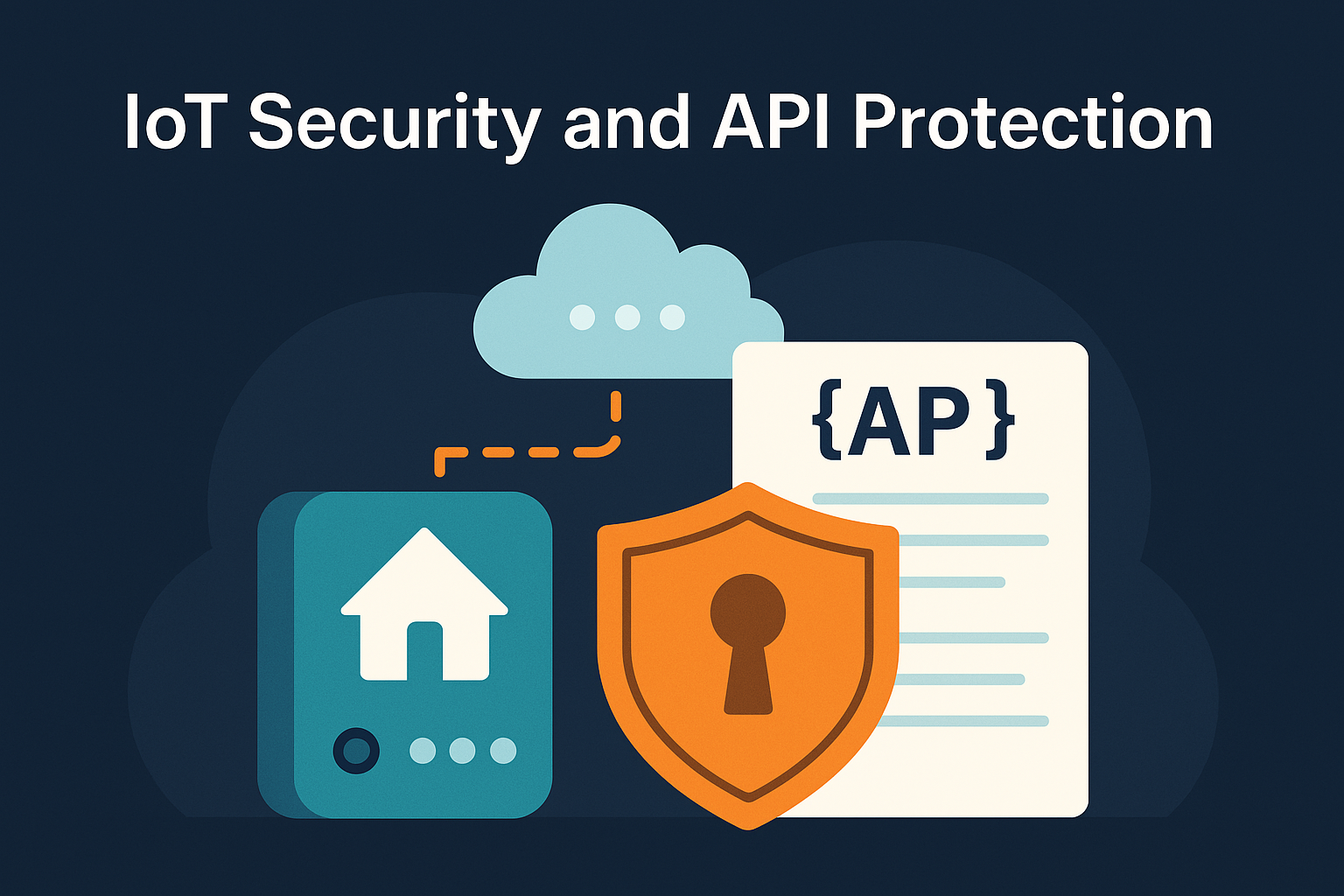
IoT Security Is Broken (And APIs Are Usually to Blame)
Executive Summary
The explosive growth of Internet of Things (IoT) devices has introduced new layers of complexity—and risk—to modern digital ecosystems. At the heart of this risk lies the insecure use of APIs, which serve as the critical interface between devices, users, and cloud services. This blog post explores real-world API failures in IoT, including the TRENDnet webcam exposure, the Mirai botnet, and TP-Link’s smart plug vulnerability. These cases reveal recurring issues: lack of authentication, poor token handling, and unvalidated firmware updates.
To counter these threats, the article offers actionable recommendations for securing APIs in IoT devices, from implementing strong authentication and encryption to enforcing rate limits and validating input. Developers and manufacturers are urged to take API protection seriously, as these endpoints often serve as the gateway to far more than just the device—they can expose entire networks.
There’s no denying it—IoT is everywhere. From smart thermostats and light bulbs to industrial control systems and connected cars, we’re living in a world where tiny computers are constantly talking to each other.
And how do they do that? Through APIs.
Those APIs are the glue that holds the IoT ecosystem together. But here’s the thing: most of them are insecure. And attackers know it.
In this post, I’ll walk you through how APIs have become one of the weakest links in IoT security, what happens when they’re left unprotected, and how developers and manufacturers can actually do better (without over-engineering everything).
Why APIs Are a Big Target in IoT
Let’s be real—most IoT devices aren’t built with security top of mind. They’re built to be cheap, fast to market, and easy to use.
That means:
- Hardcoded credentials (like admin:admin)
- APIs with no authentication
- Devices that talk to the cloud without encryption
- Firmware that never gets updated
Now layer on the fact that these devices are always connected, and often sit on home or corporate networks. It’s a perfect storm.
APIs in this context act like command centers. They:
- Control the device remotely (e.g., “turn off the camera”)
- Push firmware updates
- Collect and transmit sensitive data (like audio, video, or sensor data)
So when those APIs aren’t secured properly, the whole device becomes vulnerable—and sometimes, so does your network.
A Few Real-World API Fails That Still Haunt Us
1. The TRENDnet Webcam Disaster
Imagine discovering that your baby monitor or home security cam is streaming live video to the internet… and anyone can watch.
That’s exactly what happened back in 2012 when TRENDnet’s IP cameras exposed video feeds through an API that didn’t require a password. The result? A public list of URLs people could just click to watch strangers’ homes.
The mistake: No authentication for camera stream endpoints.
2. The Mirai Botnet That Took Down the Internet
In 2016, a piece of malware called Mirai scanned the internet for IoT devices using default usernames and passwords. Once it found them, it roped them into a massive botnet.
Then it used them to launch the biggest DDoS attacks in history—including one that knocked out major parts of the internet across the U.S.
The mistake: APIs that didn’t enforce credential changes or use rate limits.
3. The Smart Plug That Could’ve Shocked You
A more recent case involved a TP-Link smart plug. A researcher found out that its cloud API didn’t properly validate access tokens. With just a bit of reverse engineering, someone could control your smart plug—turn it on or off, monitor its usage, etc.
The mistake: Flawed token validation and session handling.
So How Do You Actually Protect APIs in IoT?
Let’s talk solutions. Here are a few no-nonsense ways to secure your IoT APIs:
1. Authentication: Not Optional
Use real authentication. That means OAuth 2.0, mTLS, or signed tokens—not just serial numbers or MAC addresses. And never, ever hardcode credentials.
2. Use Rate Limiting & Lockouts
Block brute-force login attempts, enforce rate limits on sensitive endpoints, and lock accounts after multiple failures.
3. Secure Firmware Updates
Always sign your firmware and validate it before installing. If your API allows remote updates, that’s a huge responsibility. Don’t mess it up.
4. Encrypt Everything
APIs should use TLS, even for device-to-cloud communication. And don’t skip cert validation just because you’re running on a low-power chip.
5. Validate All Inputs
Treat everything the device sends with suspicion. Validate against schemas. Sanitize user inputs. Don’t let attackers inject commands through your API.
6. Make Tokens Short-Lived
Use access tokens that expire quickly, and rotate them often. If someone gets hold of one, it shouldn’t work for long.
Tools That Actually Help
You don’t need to reinvent the wheel. These tools can help:
- OWASP ZAP / Burp Suite: To test API security during development.
- Postman: Great for testing authentication flows and simulating device behavior.
- AWS IoT Core / Azure IoT Hub: Offer built-in security for device provisioning, certificate management, and secure messaging.
And don’t forget the OWASP API Security Top 10. It’s your checklist for what not to mess up.
Final Thoughts: Build Smart, Not Just “Smart Devices”
If you’re building or integrating with IoT devices, remember this: your API is part of your product’s surface area. If it’s exposed and insecure, it’s only a matter of time before someone pokes it.
We’ve already seen too many “smart” products do dumb things with security. Let’s stop adding to the pile.
Start small:
- Lock down your endpoints.
- Encrypt your data.
- Treat authentication seriously.
- And most importantly, think like an attacker would.
Because if you don’t, they definitely will.
